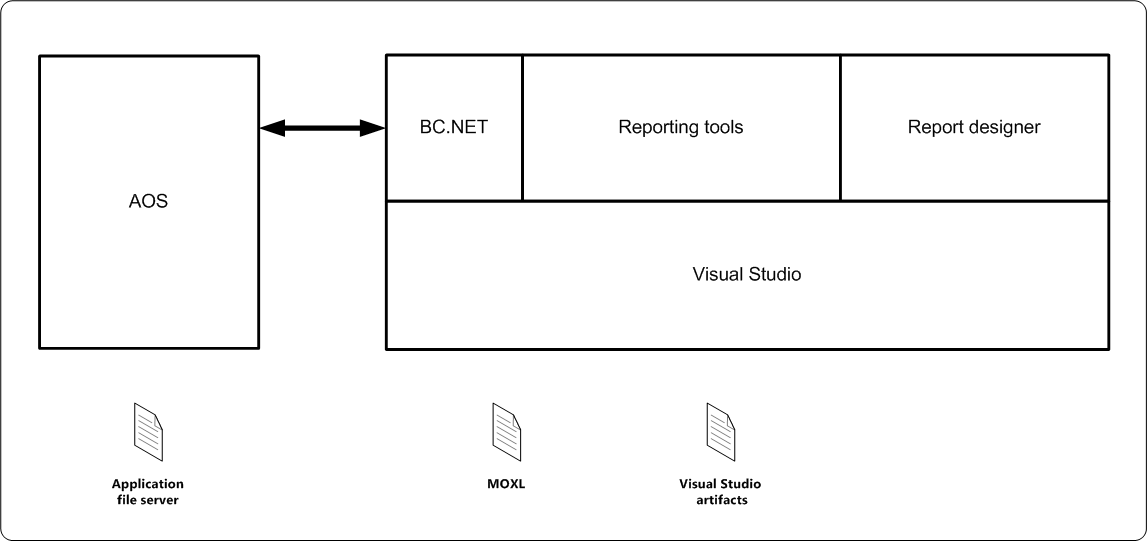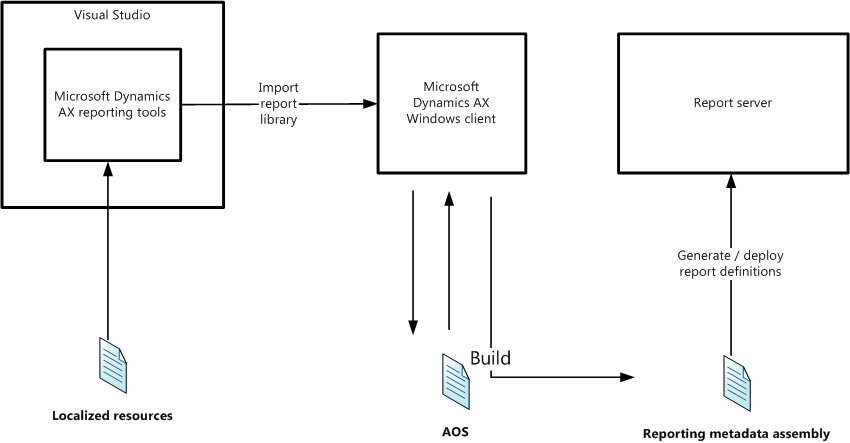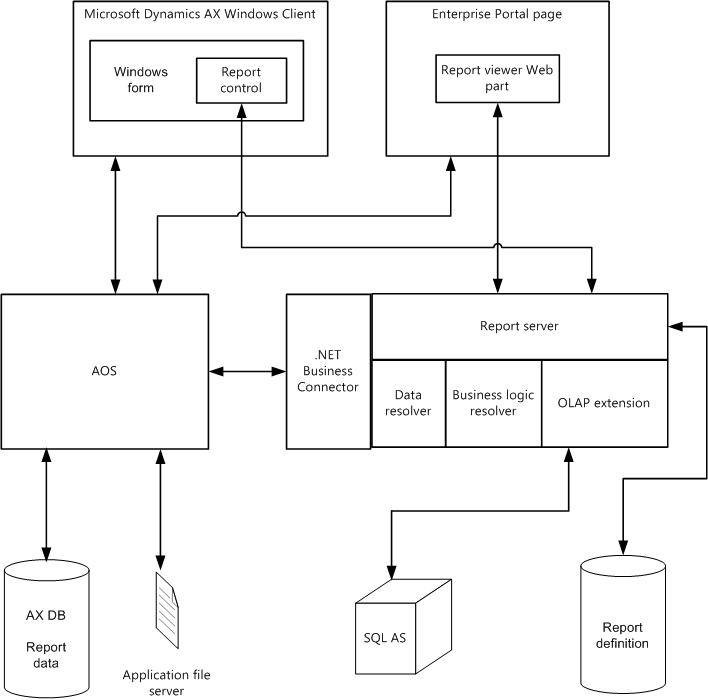The Microsoft Dynamics AX application leverages SQL Server Reporting Services and SQL Server Analysis Services to provide ad hoc reports and production reports. This topic provides a high-level overview of the integration of Microsoft Dynamics AX with Reporting Services. For information about integrating Analysis Services with Microsoft Dynamics AX, see Analysis extensions and business intelligence framework.
 Introduction
to ad-hoc reports using the Reporting Services
Introduction
to ad-hoc reports using the Reporting Services
This section describes creating report models and ad-hoc reports from the Microsoft Dynamics AX application data for transactional reports. For information on generating OLAP models and OLAP cubes, see Analysis extensions and business intelligence framework.
Ad hoc reporting enables business decision makers and technical end users to dynamically develop and run reports based on a report model. The report model is a read-only view of the business data. Report models are created from the Microsoft Dynamics AX application based on perspectives. A perspective is a collection of table references along with the metadata that describes how to generate a report model. Microsoft Dynamics AX includes standard perspectives for the different modules in the Microsoft Dynamics AX application. You can modify the standard perspectives or create new perspectives to meet your business requirements.
Different roles in an organization use this integration as follows:
-
Developers define perspectives in the Application Object Tree (AOT). For more information defining perspectives, see developer documentation on MSDN.
-
Administrators publish the report models and configure the report server. For information on publishing report models and configuration of the report server, see System and Application Setuphelp from the Helpmenu.
-
End users create reports using Report Builder. End users can also view these reports using the Report Manager Web site. When you install and configure Reporting Services, a Web site called Report Manager is created. You publish report models and reports to this site. The ad hoc reports built from the report models do not access OLAP cubes. Users can use Microsoft Excel for ad hoc analysis of OLAP cubes.
The following diagram shows the integration of Microsoft Dynamics AX with Reporting Services for ad-hoc reports.

 Introduction
to Reporting extensions and the reporting tools
Introduction
to Reporting extensions and the reporting tools
The reporting tools extend Microsoft Visual Studio to develop production reports for the Microsoft Dynamics AX application using Reporting Services. You must install the reporting tools on the developer computer with Visual Studio to enable development of Microsoft Dynamics AX production reports using Reporting Services. Reporting extensions is the runtime environment for processing production reports that are created for the Microsoft Dynamics AX application using Visual Studio and Reporting Services. You must install Reporting extensions on the report server to run the production reports. For step-by-step installation instructions, see the Microsoft Dynamics AX Installation Guide.
You can integrate production reports into the Microsoft Dynamics AX application. They can be displayed as menu items on menus and forms in the Microsoft Dynamics AX Windows client and in Enterprise Portal Web parts. The Microsoft Dynamics AX application includes default production reports that you can use immediately upon installing the reporting extensions.
For more information on the Visual Studio reporting tools, see Developer documentation on MSDN.
 Note
Note
|
|---|
|
To create production reports using the Microsoft Dynamics AX reporting tools, make sure you are using the Microsoft Dynamics AX reporting tools projects in Visual Studio and not a Reporting Services project. |
Design-time architecture of production reports
The following diagram describes the design-time architecture of the Microsoft Dynamics AX reporting tools.

Deployment architecture of production reports
When you build a reporting project in Visual Studio, assemblies are created and placed in the output path for the project. Production reports are created using Visual Studio and deployed on the report server. Production reports use the reporting extensions to interact with the AOS. The AOS will interact with the Microsoft Dynamics AX database and respond to the requests made by production reports. Reporting Services stores all report definitions in the Reporting Services database.
The following diagram describes the deployment architecture of Microsoft Dynamics AX reporting tools.

Run-time architecture of production reports
The following diagram describes the run-time architecture for Microsoft Dynamics AX production reports.






